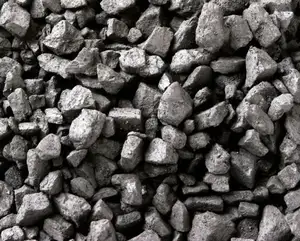Coke and Coal: Understanding Their Importance in Industry
Coke and coal play a pivotal role in various industrial applications, particularly in metal production and energy generation. Understanding the differences, characteristics, and uses of coke and coal can significantly influence production efficiency and cost-effectiveness. From powering steel manufacturing to fueling power plants, these carbon-rich materials are fundamental in many sectors.
Types of Coke and Coal
Both coke and coal come in several distinct types, each tailored for specific applications in industries. The main categories include:
- Types of Coal:
- Anthracite: The highest rank of coal, known for its high carbon content and energy density. It's often used for residential heating and metallurgical applications.
- Bituminous: Widely used for electricity generation and steel production, bituminous coal has a good heating value and is abundant.
- Sub-bituminous: Lower in carbon and higher in moisture, this type of coal is primarily used for electricity generation.
- Lignite: Known as brown coal, lignite has the lowest carbon content and is primarily used in electricity generation.
- Types of Coke:
- Metallurgical Coke: Produced from high-quality coal, metallurgical coke is essential in the production of iron and steel.
- Petroleum Coke: A byproduct of oil refining, petroleum coke is utilized in aluminum and titanium production.
Applications of Coke and Coal
The applications of coke and coal are wide-ranging, as they serve numerous sectors. Here are some of their primary uses:
- Coke Applications:
- Used in blast furnaces for smelting iron ore to produce pig iron.
- Essential in steelmaking processes, providing the carbon source for the reduction reactions.
- Employed in certain industrial boilers as a high-caloric fuel.
- Coal Applications:
- Burned in power plants to generate electricity through steam boilers.
- Utilized in cement production for generating the necessary high temperatures.
- Applied in manufacturing synthetic fuels and chemicals through gasification and liquefaction processes.
Features and Advantages of Coke and Coal
Coke and coal each offer unique features and advantages that make them valuable to various industries:
- Features of Coke:
- High Carbon Content: Coke typically contains over 90% carbon, making it highly effective for metal production.
- Low Volatile Matter: This characteristic leads to higher heat production with minimal smoke.
- Durability: Coke is relatively strong and can withstand high temperatures in a furnace.
- Advantages of Coal:
- Abundant Resource: Coal is extracted in large quantities worldwide, making it a readily available energy source.
- Cost-Effective: Compared to many other energy sources, coal remains an economically favorable option.
- Versatility: Coal can be used for various applications, from electricity generation to manufacturing products.










































































































































































